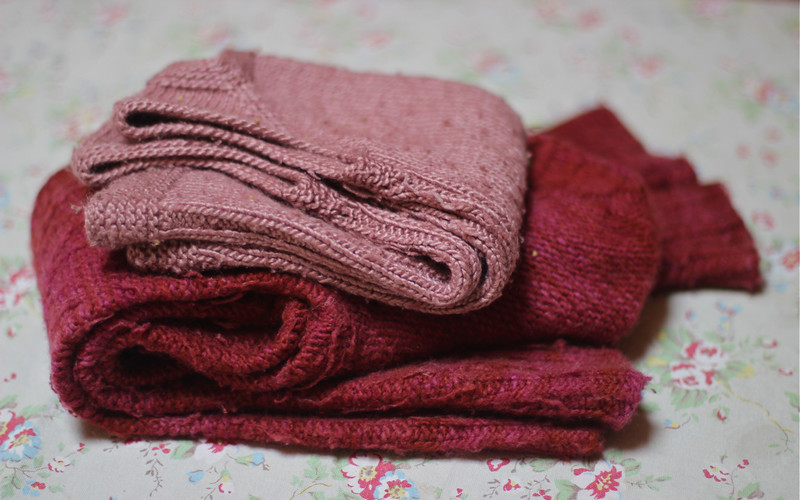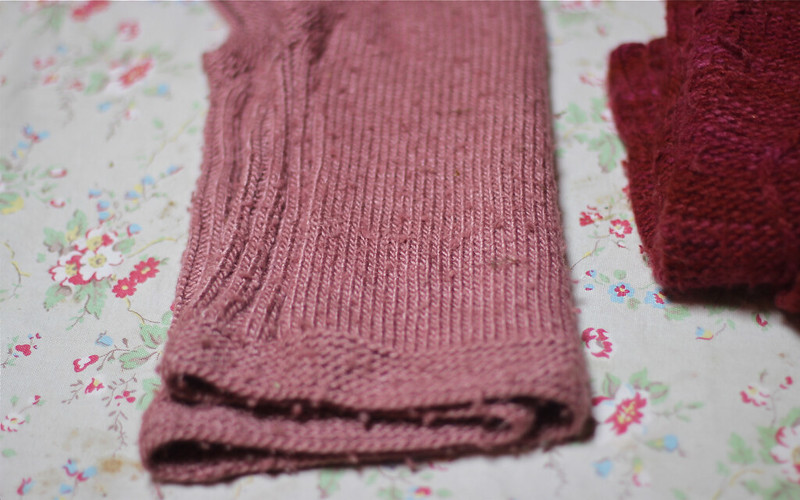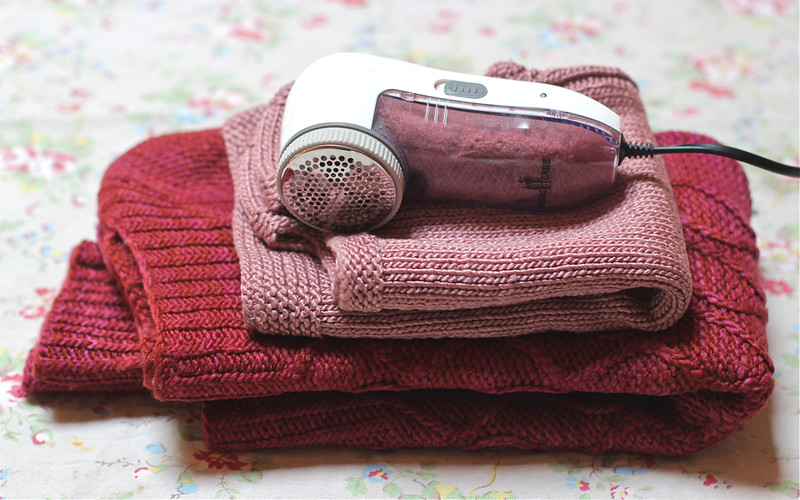Pilling

I'm excited to be bringing you a collaboration today! Tash from Holland Road Yarn shop and I have joined forces to tackle the bobbly subject of pilled knitwear!
Like most of you, I'm not a fan of pills but it seems they're an unescapable problem with knitting. Or are they? I've done some investigating to find out if you can avoid pills and how to deal with them when they happen. You might be pleased to hear that there are some tips and tricks to get the best result from you yarn and reduce the amount of pills you have to endure.
Like most of you, I'm not a fan of pills but it seems they're an unescapable problem with knitting. Or are they? I've done some investigating to find out if you can avoid pills and how to deal with them when they happen. You might be pleased to hear that there are some tips and tricks to get the best result from you yarn and reduce the amount of pills you have to endure.
CHOOSE YOUR YARN WISELY
I've been known to choose wholly inappropriate yarn for projects. Take my red sweater in the pictures for example. I used very beautiful Malabrigo Merino Worsted for my Flowing Lines. The colours are glorious and the yarn is super crazy soft and yummy. But, look at those pills?! Almost as soon as I put it on the yarn started to rub into pills. It's pilled over the whole of the body but especially under my arms it rubs most.
The little Kelpie vest I made for my daughter last year has also pilled terribly. I used Louisa Harding's Grace silk & wool blend and again, it's soft and warm and totally unsuitable for a garment that gets worn, bashed, rubbed and beaten up!
Both of these knits were made with luxury fibres that had been loosely spun. It turns out that those two factors create the ideal enviroment for producing pills.
Softness vs Durability
I've been known to choose wholly inappropriate yarn for projects. Take my red sweater in the pictures for example. I used very beautiful Malabrigo Merino Worsted for my Flowing Lines. The colours are glorious and the yarn is super crazy soft and yummy. But, look at those pills?! Almost as soon as I put it on the yarn started to rub into pills. It's pilled over the whole of the body but especially under my arms it rubs most.
The little Kelpie vest I made for my daughter last year has also pilled terribly. I used Louisa Harding's Grace silk & wool blend and again, it's soft and warm and totally unsuitable for a garment that gets worn, bashed, rubbed and beaten up!
Both of these knits were made with luxury fibres that had been loosely spun. It turns out that those two factors create the ideal enviroment for producing pills.
Softness vs Durability
- All wool is prone to some degree of pilling but if you're after a garment that's not going to pill too much, it pays to avoid luxury fibres. Both of my yarns contained merino which, although deliciously soft, is not a durable fibre. It's slippery and silky and doesn't have the "stickiness" of a courser fibre such as Romney which will wear better over time.
- My red sweater yarn was a "single". That means it was one single piece of wool lightly spun into a yarn. Single spun fibres are delicate. They don't have the structure of a tight spin to hold the fibres in place so they work their way out easily and cause pills. A loosely spun fibre like the pink yarn I used will do the same. A smooth, tightly spun yarn will hold together better over time.
- Generally speaking, a cellulose fibre (e.g. cotton & linen) will pill less than a protein fibre (e.g. wool, silk & alpaca) but even those will pill too depending on the quality of the yarn and how it's spun. If you're set on finding the least pilly yarn possible, it might pay to experiment by knitting up swatches of similar fibres and seeing how they compare.
- I am an unashamed lover of natural fibres so choose those every time but even so, don't be fooled into thinking that man-made fibres won't pill. Acrylic is terrible at pilling and because the fibres are so strong, those pills are fixed like concrete to your garment.

KNITTING TO REDUCE PILLING
- Knitted fabric pills much more than woven fabric because the overall construction is looser. Knitting with a smaller gauge will tighten your knitting and help reduce pilling by holding the yarn more firmly in place. Of course, some of our favourite garments are loose and flowing so this won't be possible all the time. But, if you're desperate to use a soft, loosely spun yarn, knitting at a tighter gauge may help balance things out.
- An alternating knit/purl stitch such as ribbing or seed stitch will pill less than stocking stitch or garter. You'll see that both my garments in the photos are mostly stocking stitch! (Reverse stocking stitch in the case of the red sweater).
- Wash your knits carefully! Machine washing causes rubbing which in turn causes pilling. It really is worth hand washing your knits! (Plus, it really is a very lovely thing to do).

GETTING RID OF PILLS!
Once you've got those ghastly pills, how do you get rid of them? I must confess, I've still been wearing my red sweater, despite the pills. They're pretty yucky but I still love the pattern, the fit of this sweater and it's so lovely and warm. So, I've tried to ignore them, look straight ahead and pretend they're not there. It wasn't until I came to write this post that I thought I'd try depilling them!
Many people shave their knitwear with very sorry results. One accidental bump of the razor and you've cut straight through it! I've tried using a razor in the past but haven't been happy with how precarious and unsatisfactory shaving is.

This time I tried a special machine - an electric depiller! After hearing Georgie Hallam rave about her depiller I knew I had to try one too. So I held my breath and bought a rather expensive Electric Shaver. I was not disappointed. This machine is magic. I absolutely cannot get over how well it removed the pills and how fabulous my sweaters looked after I'd used it! They are as good as new.
If you can't stretch to an electric depiller I do recommend trying a manual depiller (not a razor!). You can get combs and brushes fairly inexpensively that apparently do a pretty good job. The trick is to tackle those pills as soon as they start to appear and to de-pill regularly.
Unlike man-made fibres, wool pills less and less as time goes on. Dealing with those short fibres that work their way out quickly leaves the more secure fibres in place so eventually your sweater is supposed to stop shedding altogether. I was told recently that even the super soft red malabrigo in my sweater will stop pilling quite so badly once it's shed the first lot of short, loose fibres. I'll have to let you know if that's true!
Good luck with your pills! If you want to catch up with more tips and tricks for dealing with pills check out Tash's post on the Holland Road blog!
Once you've got those ghastly pills, how do you get rid of them? I must confess, I've still been wearing my red sweater, despite the pills. They're pretty yucky but I still love the pattern, the fit of this sweater and it's so lovely and warm. So, I've tried to ignore them, look straight ahead and pretend they're not there. It wasn't until I came to write this post that I thought I'd try depilling them!
Many people shave their knitwear with very sorry results. One accidental bump of the razor and you've cut straight through it! I've tried using a razor in the past but haven't been happy with how precarious and unsatisfactory shaving is.

This time I tried a special machine - an electric depiller! After hearing Georgie Hallam rave about her depiller I knew I had to try one too. So I held my breath and bought a rather expensive Electric Shaver. I was not disappointed. This machine is magic. I absolutely cannot get over how well it removed the pills and how fabulous my sweaters looked after I'd used it! They are as good as new.
If you can't stretch to an electric depiller I do recommend trying a manual depiller (not a razor!). You can get combs and brushes fairly inexpensively that apparently do a pretty good job. The trick is to tackle those pills as soon as they start to appear and to de-pill regularly.
Unlike man-made fibres, wool pills less and less as time goes on. Dealing with those short fibres that work their way out quickly leaves the more secure fibres in place so eventually your sweater is supposed to stop shedding altogether. I was told recently that even the super soft red malabrigo in my sweater will stop pilling quite so badly once it's shed the first lot of short, loose fibres. I'll have to let you know if that's true!
* * * * * * * * * * * * * * *
Good luck with your pills! If you want to catch up with more tips and tricks for dealing with pills check out Tash's post on the Holland Road blog!
